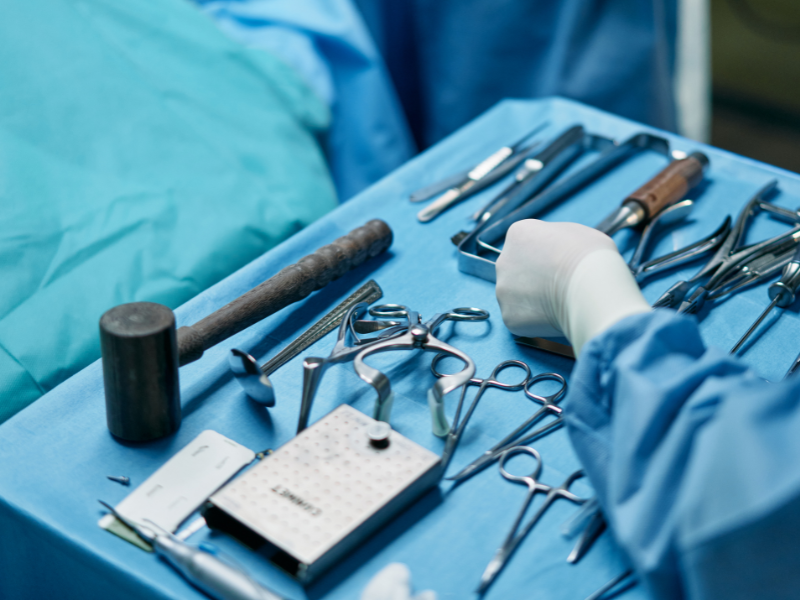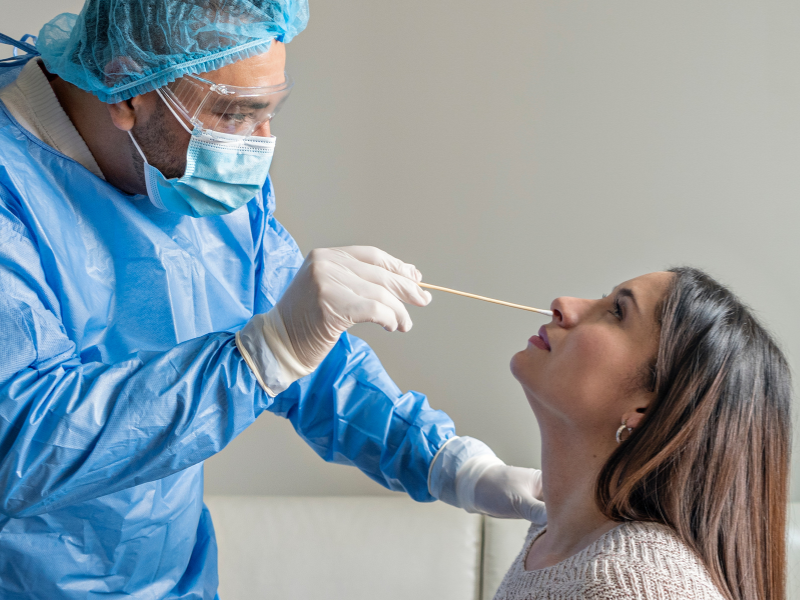In healthcare, the devices we use to check, monitor, and treat patients are not just tools—they are crucial for keeping patients safe and improving their health. Whether it’s a basic thermometer or a complex surgery robot, these devices need to work properly, be safe, and be effective. This is where medical device standards come in.
At Syracuse Biomedical Services, LLC, we know how important it is to follow these standards. Medical device standards are rules that help makers create products that meet strict safety and quality requirements. In this article, we will explain why these standards matter and highlight the main ones that make sure the medical devices we use are both safe and effective.
Why Medical Device Standards Are So Important

Medical device standards are necessary to ensure that the tools used in healthcare—whether for diagnosing, monitoring, or treating patients—are safe, reliable, and effective. These standards are important for protecting patients, doctors, and healthcare providers. Here’s why they matter:
1. Keeping Patients Safe
The main reason for medical device standards is to keep patients safe. If a device fails at a critical time, like a heart monitor not working during surgery or a glucose meter giving wrong readings, it can cause serious harm. Medical device standards help make sure that devices work properly and don’t put anyone at risk.
These standards require that devices be tested thoroughly and meet strict safety guidelines. This way, devices are less likely to fail and more likely to protect patients when they need it most.
2. Guaranteeing High Quality
Medical devices must work the same way each time they are used. If a device doesn’t perform as expected, it can cause serious health problems. For example, a pump that delivers medicine might stop working, or a diagnostic tool might give the wrong result.
Medical device standards ensure that devices are made with high quality and work as they should. Manufacturers follow these rules to make sure their products are reliable, so healthcare providers can trust that the equipment will always work correctly when needed.
3. Navigating Regulatory Approval
Before a medical device can be used in countries like the U.S. or Europe, it has to meet certain safety rules set by regulators. For example, the FDA in the U.S. and the European Medicines Agency (EMA) in Europe make sure medical devices are safe and effective.
Following medical device standards helps manufacturers meet these rules and get their products approved. Without this approval, devices cannot be sold or used, which is why these standards are essential for bringing new devices to market.
4. Building Consistency in Production
Consistency is key when it comes to making medical devices. Every device needs to work the same way each time. If a device is made incorrectly or with mistakes, it could fail and endanger a patient.
Medical device standards provide clear guidelines for manufacturers on how to produce devices correctly. These rules help ensure that every device is made the same way, reducing the chance of defects or mistakes. This way, manufacturers can produce reliable devices that work as expected.
5. Expanding Global Access
Medical devices are used all over the world, and to be sold in different countries, they must meet international standards. By following these standards, manufacturers can sell their products in many different markets. This allows patients in different parts of the world to benefit from new medical devices.
Meeting global standards helps make sure that more people have access to safe and effective medical devices, improving healthcare worldwide.
Key Medical Device Standards You Should Know About

Medical device standards provide clear rules to make sure products are safe and work well. These standards help manufacturers create reliable, safe devices for healthcare. Here are some of the most important standards for medical devices:
1. ISO 13485:2016 – Quality Management Systems for Medical Devices
ISO 13485 is a key standard for making sure medical devices meet high-quality standards. It guides manufacturers on creating a system that ensures their products are made consistently and safely. Following this standard helps manufacturers create devices that are both reliable and meet regulations. It is also used in Europe, which is important for companies wanting to sell their products there.
2. ISO 14971:2019 – Risk Management for Medical Devices
ISO 14971 helps manufacturers identify and manage risks. When creating a medical device, manufacturers must consider potential risks, like product failures or harmful reactions. This standard outlines how to assess and manage these risks to keep devices safe and effective for patients.
3. ISO 9001:2015 – Business Quality Management Systems
ISO 9001 is a general quality management standard, not specific to medical devices. However, it’s important for ensuring that manufacturers follow consistent processes. This standard shows that companies are committed to producing high-quality products. It works alongside ISO 13485 to help ensure devices meet expectations.
4. ISO 62304:2006 – Software in Medical Devices
Many medical devices now use software to work. ISO 62304 provides guidelines for the development and maintenance of software in medical devices, ensuring it functions correctly and safely. This is crucial for devices that depend on software, like pacemakers or diagnostic tools.
5. ISO 10993 – Biological Evaluation of Medical Devices
For devices that touch the human body, such as implants, ISO 10993 is key. This standard tests medical devices for potential risks like toxicity or irritation. It ensures devices are safe to use in or on the body, helping protect patients from harmful reactions.
6. ISO 15223 – Symbols for Medical Device Labeling
Proper labeling is important to ensure medical devices are used correctly. ISO 15223 sets rules for the symbols used on device labels and packaging. These symbols make it easier for healthcare providers and patients to understand important information, even across different languages.
7. ISO 11135:2014 – Ethylene Oxide Sterilization
Sterilizing medical devices is essential to prevent infection. ISO 11135:2014 covers how to sterilize devices using ethylene oxide (EtO), a common sterilization method. This standard ensures devices are sterile without affecting their safety or function.
8. ISO 11137 – Sterilization Using Radiation
Like ISO 11135, ISO 11137 covers sterilization but focuses on using radiation to kill harmful microorganisms. This helps make sure devices are sterile and safe for use in healthcare.
9. ISO 11607 – Packaging for Sterilized Medical Devices
Sterile packaging is just as important as sterilization. ISO 11607 gives guidelines for packaging medical devices in a way that keeps them sterile until they are used. This ensures devices stay free from contaminants when they are opened.
10. IEC 60601 – Electrical Safety for Medical Devices
Many medical devices rely on electricity, like MRI machines and pacemakers. IEC 60601 ensures electrical devices are safe and work correctly. This standard helps prevent electrical hazards and ensures devices perform well in healthcare settings. Different countries may have their versions of this standard, but the goal is the same: to ensure electrical medical devices are safe.
The Role of Regulatory Bodies

Regulatory bodies play a very important role in making sure medical devices are safe and effective. They make sure that devices used in healthcare meet certain rules and standards before they can be sold or used. Let’s look at some of the most important regulatory bodies around the world:
1. FDA (Food and Drug Administration)
The FDA is the regulatory agency in the United States. It makes sure that medical devices sold in the U.S. are safe and work properly. The FDA sets strict rules for manufacturers to follow, and only devices that meet these rules can be sold. The FDA also checks devices regularly to ensure they continue to meet safety and performance standards. This protects patients from harmful or faulty devices.
2. EMA (European Medicines Agency)
In Europe, the EMA is in charge of regulating medical devices. Like the FDA in the U.S., the EMA ensures that devices used in Europe are safe for patients and healthcare workers. The EMA works with countries in Europe to create and enforce rules that manufacturers must follow. The goal is to keep patients safe while ensuring the devices used are effective and reliable.
3. Other Regulatory Bodies
Many other countries have their own agencies that regulate medical devices to protect their citizens. Here are a few examples:
- Health Canada: This agency is responsible for regulating medical devices in Canada. It ensures that devices meet Canadian safety standards and are safe for use in healthcare settings.
- TGA (Therapeutic Goods Administration): The TGA is the regulatory body in Australia. It oversees the approval and safety of medical devices in Australia to ensure they are safe for patients.
- PMDA (Pharmaceuticals and Medical Devices Agency): In Japan, the PMDA is the agency that ensures medical devices meet the necessary safety standards and work well for patients.
These regulatory bodies all work to make sure that medical devices are safe for people, whether it’s a simple thermometer or a more complex device like a surgical robot. They help protect patients from harm by making sure that every device used in healthcare is properly tested and meets high standards.
The Benefits of Following Medical Device Standards

When manufacturers follow medical device standards, they get important benefits. These benefits help make sure devices are safe, work well, and are trusted by patients and healthcare providers. Here are the main benefits:
1. Improved Patient Safety
The main benefit of following medical device standards is keeping patients safe. When manufacturers follow the rules, they make sure devices are tested for safety. This lowers the risk of the devices breaking or causing harm. For example, a heart monitor that meets safety standards is less likely to stop working at critical moments. This helps protect patients and gives doctors confidence in using the device.
2. Regulatory Compliance
Selling medical devices in global markets requires adherence to strict regulations from agencies like the FDA in the U.S. and the EMA in Europe. Compliance with medical device standards, along with routine medical equipment inspection, ensures that products meet these legal requirements. This simplifies the approval process, allowing manufacturers to distribute their products worldwide while guaranteeing safety for users.
3. Better Product Quality
Medical device standards help ensure products are high quality. When manufacturers follow these standards, their devices are reliable and work well each time. For example, an insulin pump must deliver the right amount of insulin every time. Following the standards helps manufacturers create products that perform well and protect patients’ health.
4. Global Market Access
Following medical device standards allows manufacturers to sell products worldwide. Many countries have their own rules, but many of these are based on international standards. By meeting these standards, manufacturers can sell their products in many countries. This helps grow their business and reach more patients.
5. Increased Trust
Manufacturers who follow medical device standards build trust with doctors, hospitals, and patients. Doctors and hospitals are more likely to trust devices that meet these standards because they know the devices are safe. Patients also feel more confident using devices that are safe and reliable. This trust helps manufacturers build a good reputation and make their products more successful.
By following medical device standards, manufacturers can create better products, build trust, and expand their business worldwide.
Conclusion
Medical device standards are very important to make sure the devices used in healthcare are safe, high-quality, and work well. When manufacturers follow these standards, they create products that meet regulations, keep patients safe, and improve healthcare. At Syracuse Biomedical Services, LLC, we help manufacturers follow these standards so their devices are safe, reliable, and ready for markets worldwide.
By following medical device standards, manufacturers make sure patients can trust the devices they depend on for their health and safety.

